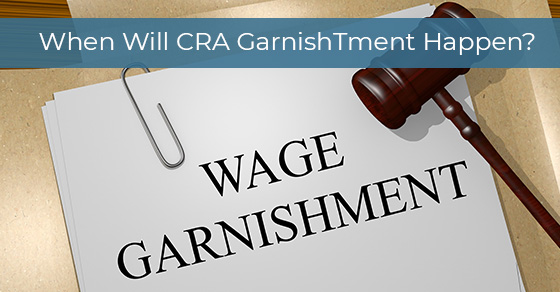
When Will CRA Garnishment Happen?
Having tax debt can not only be stressful but can also make your financial situation worse, if the government decides that it is time to garnish your wages. Wage garnishment is a tactic the government uses if you have not paid your tax debt in full. It allows them to take money directly from your employer and force your clients to pay them directly if you are self-employed.
CRA Garnishment
The Canada Revenue Agency (CRA) can resort to garnishment of your wages if they have decided you are not following your obligations to pay your tax debt. This is a scary prospect which will greatly impact your income. Garnishment can be as high as 50% of your employment income and 100% of any other income, such as contracts or pensions. The CRA will send a letter notifying your employer that they will have to increase their tax deductions because you have an outstanding balance. This is a legal obligation your employer has no choice but to follow. If they don’t, they could face legal action by the government. If you are thinking, “well too bad for the CRA as I am self-employed,” they can also go after your clients and demand they pay the CRA directly.
Automatic CRA Garnishment
Unlike other creditors, the government doesn’t need a court order to start wage garnishment and they can even do it without notifying you when garnishment will start. This means one day your pay cheque will just appear drastically lower. This can lead to further debt burden if you cannot meet the needs of your other creditors and expenses.
Notice of Assessment
Once your income taxes are processed a CRA garnishment can start any time. They will process your income tax and send you a notice of assessment telling you how much you owe. This can be the same as the amount you submitted, more, or sometimes less if you are lucky. The CRA expects citizens to pay up at the same time they submit their taxes. However, if you can’t pay, or choose to only pay a partial payment leaving a balance, the CRA will begin a process to collect their money.
Negotiating Payment Options
Keep in mind that the CRA does offer many opportunities to agree on repayment before this tactic is used. Traditionally they will send a notice of assessment as the first step to let you know you owe money. They will be asking you to pay the debt in full, however, they are usually amiable about making a payment arrangement.
Then they will begin to follow up with calls that are not quite collection calls; typically they will ask when you expect to pay the debt and try to get you to commit to a timeline. If you cannot pay in full, they will often suggest things such as using credit cards to pay off the debt. These payment suggestions should not be agreed to without consulting an expert to make sure you are not committing to a payment plan you cannot honour.
Access to Employers
Keep in mind that as long as you carry a tax balance, you remain at risk for wage garnishment. Also, if you think they can’t get a hold of your wage providers, they have many ways of doing so including:
- The employer name on your T4s
- You name your employer during a phone call
- The employer name appears on disclosure forms given to CRA
- Your employer’s tax filings
- A tax audit of your clients or suppliers if you are self-employed
Working with a debt consulting company will provide you manageable options to avoid CRA wage garnishment or stop wage garnishment if the CRA has already taken action.
To find out more about wage garnishment by the CRA, call Charles Advisory Services at 416-915-9007 or contact us here.

Leave A Comment